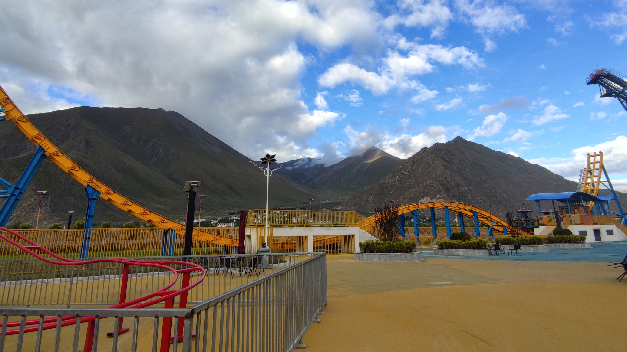- Albanian
- Arabic
- Belarusian
- Bengali
- Czech
- English
- French
- German
- Hebrew
- Hungarian
- Indonesian
- irish
- Italian
- Japanese
- kazakh
- Persian
- Russian
- Thai
- Uzbek
- Vietnamese
Exploring Innovative Approaches to Roller Coaster Design and Engineering for Thrilling Experiences
The Art and Science of Roller Coaster Design
Roller coasters, an iconic feature of amusement parks around the world, blend art and engineering in a thrilling rollercoaster of creativity and innovation. The design process behind these adrenaline-pumping attractions is as intricate as the rides themselves, requiring a deep understanding of physics, ergonomics, and aesthetics.
The Art and Science of Roller Coaster Design
Once the basic structure is outlined, the safety of the ride becomes paramount. Designers must consider load factors, ensuring that the materials and construction can withstand the stresses experienced during operation. Roller coasters are typically built using steel or wood, each material offering unique attributes. Steel coasters tend to allow for smoother and more complex designs, while wooden coasters provide a nostalgic feel and a different type of thrill. Engineers conduct rigorous testing, including computer simulations and physical strain tests, to ensure that ride components can handle dynamic loads over time, especially during high-speed turns and drops.
rollercoaster design

In addition to the scientific considerations, an important element of roller coaster design is aesthetics. Designers aim to create visually stunning rides that stand out in the amusement park landscape. The use of color, lighting, and themes can greatly enhance the experience. For instance, a wild west-themed coaster might incorporate rustic colors and props, while a futuristic ride could employ vibrant neon lights and sleek metal structures. The visual elements serve to evoke emotions and provide context that enhances the overall experience, making each ride not just a thrill but also a spectacle.
Moreover, the experience from the rider's perspective—psychological factors—plays a crucial role in the design process. Designers need to craft moments of anticipation, surprise, and relief. For example, the slow ascent of a lift hill builds tension, while unexpected drops or inversions can induce sheer delight. The layout also considers how riders might perceive and react to each element, ensuring that there is a balance between excitement and comfort.
The integration of technology has also transformed roller coaster design. Modern coasters often include features such as virtual reality experiences or synchronized music to amplify the excitement. As technology continues to advance, it opens up new avenues for innovation, enhancing the immersive aspects of the ride.
In conclusion, roller coaster design is a fascinating convergence of art and science. It requires a multidisciplinary approach that marries physics and engineering with creativity and psychological insight. As designers push the boundaries of thrill, the stakes of safety and rider experience remain paramount. Whether it's the sheer height of a drop or the twisting complexity of a track, each coaster tells a story of daring creativity and meticulous planning, inviting riders to embrace the exhilaration of the ride. The thrill of roller coasters will undoubtedly continue to captivate audiences, as designers explore new dimensions in this exhilarating art form.
-
Flume Ride-Hebei Zhipao Amusement Equipment Manufacturing Co., Ltd.|Thrilling Water Attraction&Customizable DesignJul.30,2025
-
Flume Ride - Hebei Zhipao Amusement Equipment | Water Coaster, Thrilling DescentJul.30,2025
-
Flume Ride - Hebei Zhipao | Thrilling Water AttractionJul.30,2025
-
Flume Ride: Thrilling Water Attraction by Hebei Zhipao|Log Flume Manufacturers&Flume Ride DesignJul.30,2025
-
Flume Ride-Hebei Zhipao Amusement Equipment Manufacturing Co., Ltd.|Thrilling Water Coaster, Safe DesignJul.30,2025
-
Flume Ride-Hebei Zhipao Amusement Equipment Manufacturing Co., Ltd.|Thrilling Water Attraction, Safe DesignJul.30,2025
